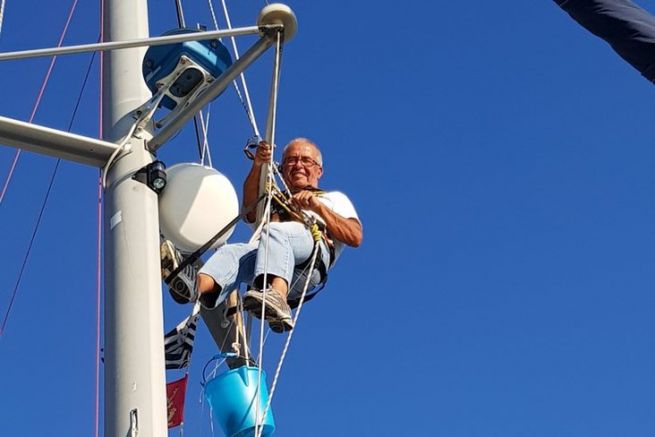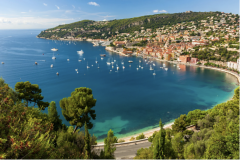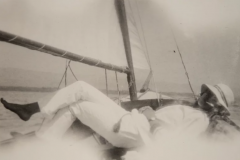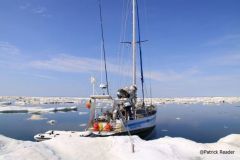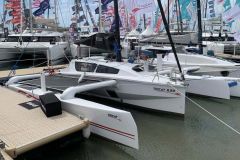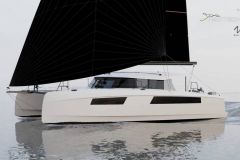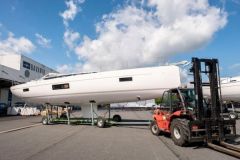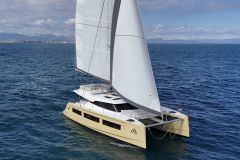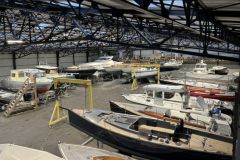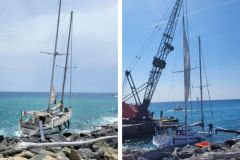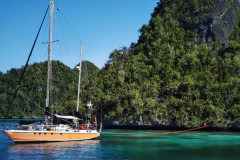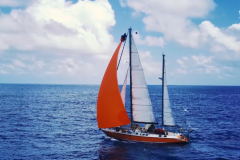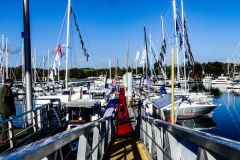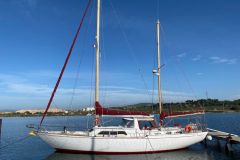Patrick has been sailing on a Dufour 2800 for 28 years. Often single-handed, regularly in the North Sea, without any fear of taking long routes. When he meets his wife Christine, naturally he takes her on a cruise. Cruising in England, it is to show her how it is done in a gale, that he decides to go out with 3 reefs in the GV and the storm surge at force 8. Just to show him what it's like when it blows. And she saw the sailboat lying down... That day Patrick understood that if he wanted to go on a boat trip with her, he would need a multihull, a boat that doesn't list.
Around the world over 3 years without passing through Panama
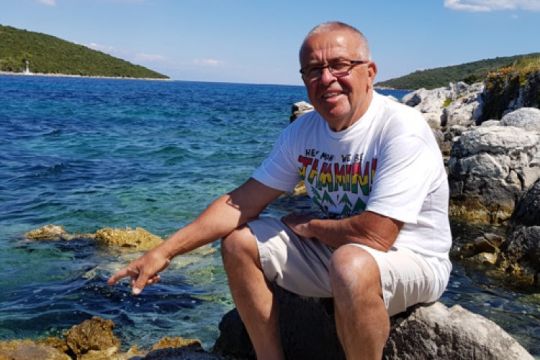
The project of Patrick and his wife is to go sailing around the world over 3 years from September 2021 (if the health crisis allows it). After a transatlantic race, the crew has the will to circumnavigate South America via the south by visiting the canals of Patagonia before sailing up along Chile. They then set a course for Polynesia, crossed the Indian Ocean and returned to the Atlantic. A circumnavigation of the world that he hopes to achieve on 2 hulls.
A catamaran or nothing!
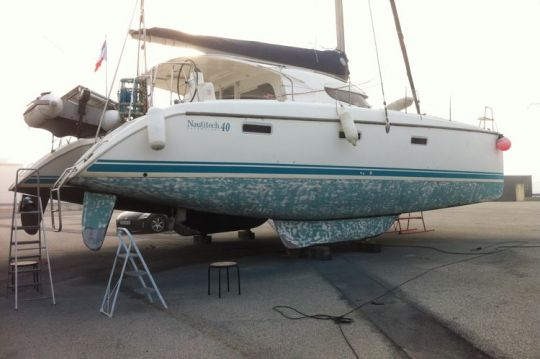
In 2015, Patrick therefore sets out in search of a catamaran. He has no experience on these boats. It's his budget and above all the look of the yacht which make him choose models: "I was looking at the Lagoon 40 and the Nautitech 40. I eliminated the Fountaine-Pajot just because I don't think they're pretty!" His first experience in a catamaran, he made it by trying out the Nautitech 40 which he discovered in Sicily (a 2004 model), a one-hour sea trip. At the time, he knew nothing about the quality of construction of these boats. His experience, he is going to make it on the first convoy. The boat has to be brought up the English Channel as Patrick has always been based in Cherbourg.
A muscular first experience

Two days after buying the boat, Patrick set sail for Gibraltar solo of course. It's April and the weather in the Mediterranean reminds us of that. After 36 hours at sea in the nose and wind refusing, Patrick turns back. Batteries do not hold the charge, the trampoline net is torn ... Patrick will also learn that to reach Gibraltar, it is better to go around Sardinia by the North to avoid this strong headwind.
But this first experience allows Patrick to better understand his boat. The rest of the delivery will take place with fewer problems once the 2 batteries have been replaced. Once in Cherbourg, the major work can begin.
Large modifications for a total change in behaviour
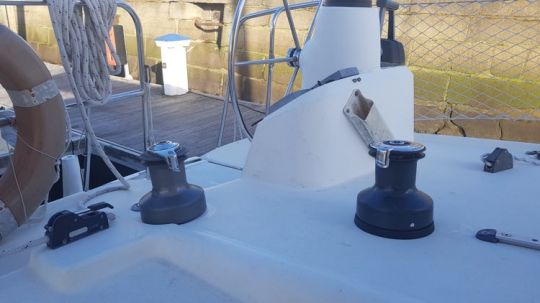
To begin with, the sailor realised that the 2 single winches in the cockpit were insufficient. He cannot roll the genoa when it is hoisted on the same edge as the furling system. Or else, he has to tuck the mainsail in on the opposite edge to the jib. So by replacing the deck core with a monolithic part, he adds 2 winches that he chooses electric. Manoeuvres are made easier.

The following year will be devoted to the replacement of the windlass. On the Nautitech 40, the anchor locker is fitted in the forward point of the port hull. The windlass is installed in the same place. After replacing the windlass once and changing its engine twice, Patrick began to have doubts. Could it be that the anchor well was flooded with water? He therefore decided to move all the anchorage to the foot of the mast, as is often the case on catamarans, in order to centre the weights. He imagines reinforcements and a stainless steel structure to accommodate a new windlass and a beautiful plough anchor. The catamaran now has a 45 kg Vulcan anchor, 65 m of chain 10 (grade 70) and 100 m of 24 mm cable. An anchorage dimensioned to visit the canals of Patagonia. But more than just the boat's good handling, it also has a completely new behaviour. This re-centering of the weights and the emetic closure of the original leash (which could take 1.5 tons of water!) limits very strongly the pitching. Where the Nautitech used to be a submarine in rough seas, now it goes over the waves.
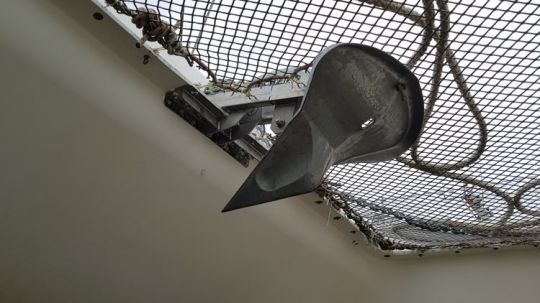
To cope with the cold weather forecast for the trip, Patrick decides to install a Webasto heater. He chooses a liquid radiator system (not forced air). He installs 2 air heaters in each of the hulls hoping that the warm air that rises will also heat the saloon. The first tests in the humid cold of Scotland at Easter showed that it works. Will it be enough? In case it is, Patrick has a spare heater to install in the saloon if necessary.
Continue browsing to test
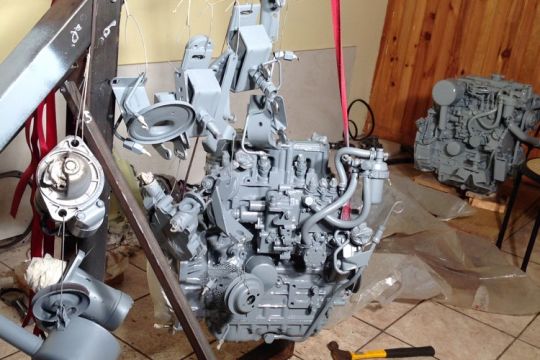
All the sailing done with the boat over the last 5 years will be used to test everything. During his holidays, Patrick sails to the Mediterranean or the North of England. He doesn't hesitate to sail miles, often alone on board. And these cruises will reveal some of the boat's weaknesses.
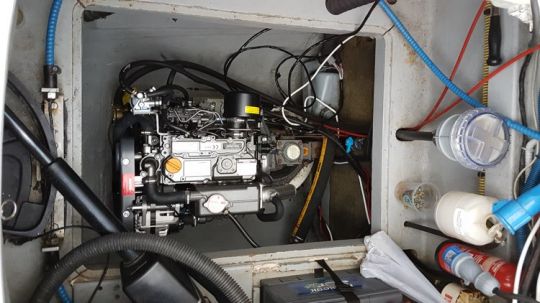
Although Patrick has completely dismantled and renovated the two engines, he will be surprised when the starboard one breaks down permanently (broken connecting rod). It's a gooseneck problem on the exhaust (an original assembly from the shipyard...) which in heavy seas made a siphon and allowed the cooling water to enter the cylinders. This bad assembly which is only detected when sailing in bad weather will cost an engine!
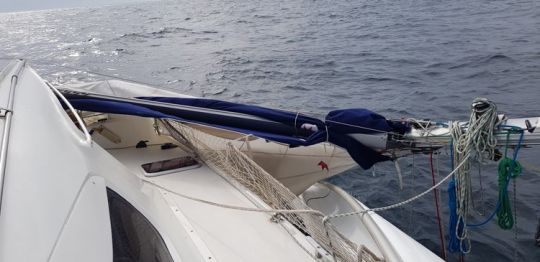
Another incident in 2020, despite checks and without warning, the forestay will break, leading to dismasting. This will be an opportunity for Patrick to change the mast and the rigging, but above all to have his sails trimmed again at Sail Concept in Vannes: mainsail and genoa, which he is very happy with the result. A spinnaker (with sock) and gennaker complete the set of sails, even if in the absence of a compression beam, these sails cannot be rigged on a spinnaker pole in the centre of the boat.
Solar panels, watermaker, navigation electronics... little by little, Patrick's catamaran is taking shape, always with a view to this round-the-world voyage and in particular this long-awaited (and dreaded) passage through the Patagonian canals. To do this Patrick has a principle: "At each mess, I correct it by repairing and adding extra replacement equipment".
